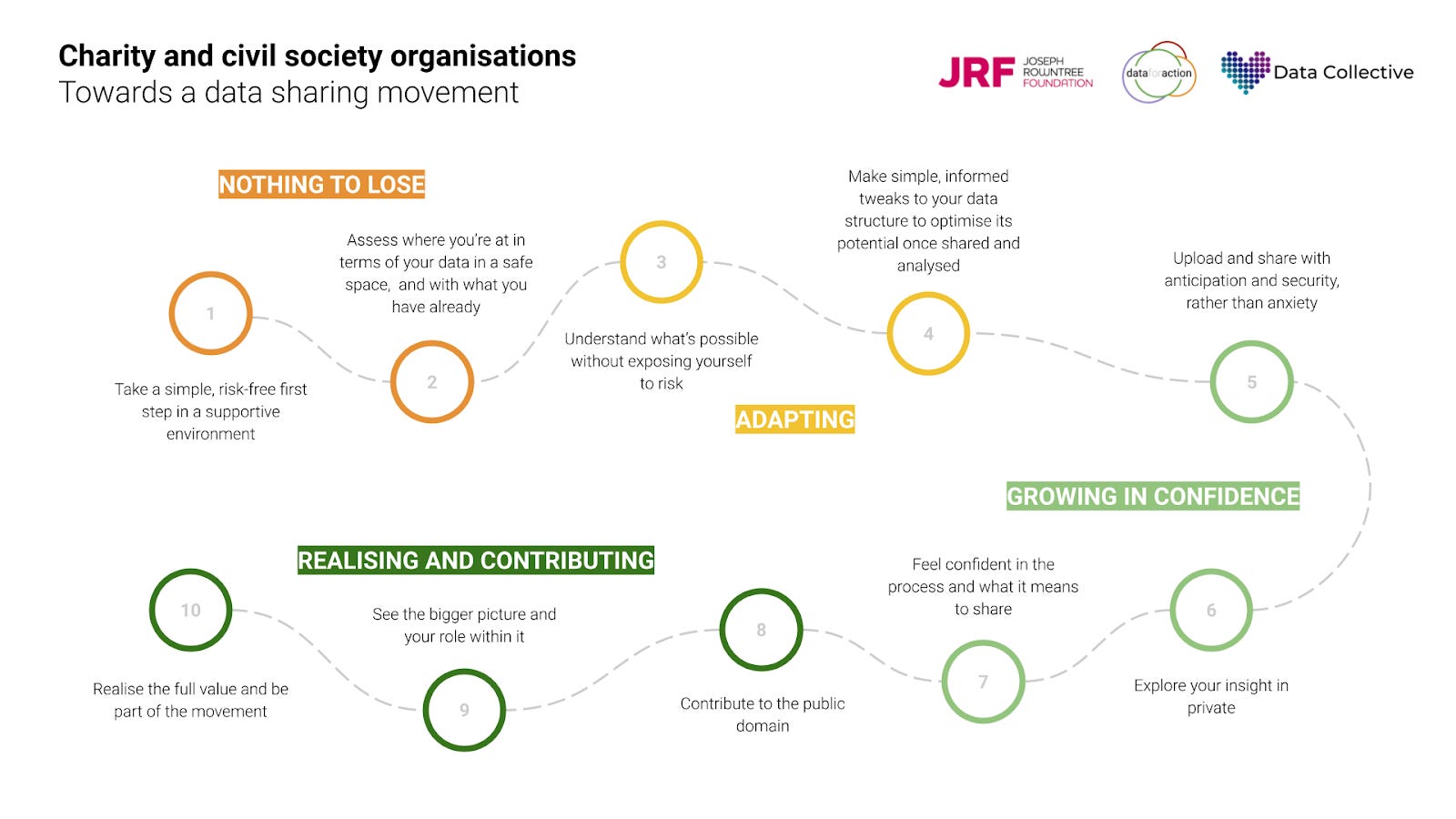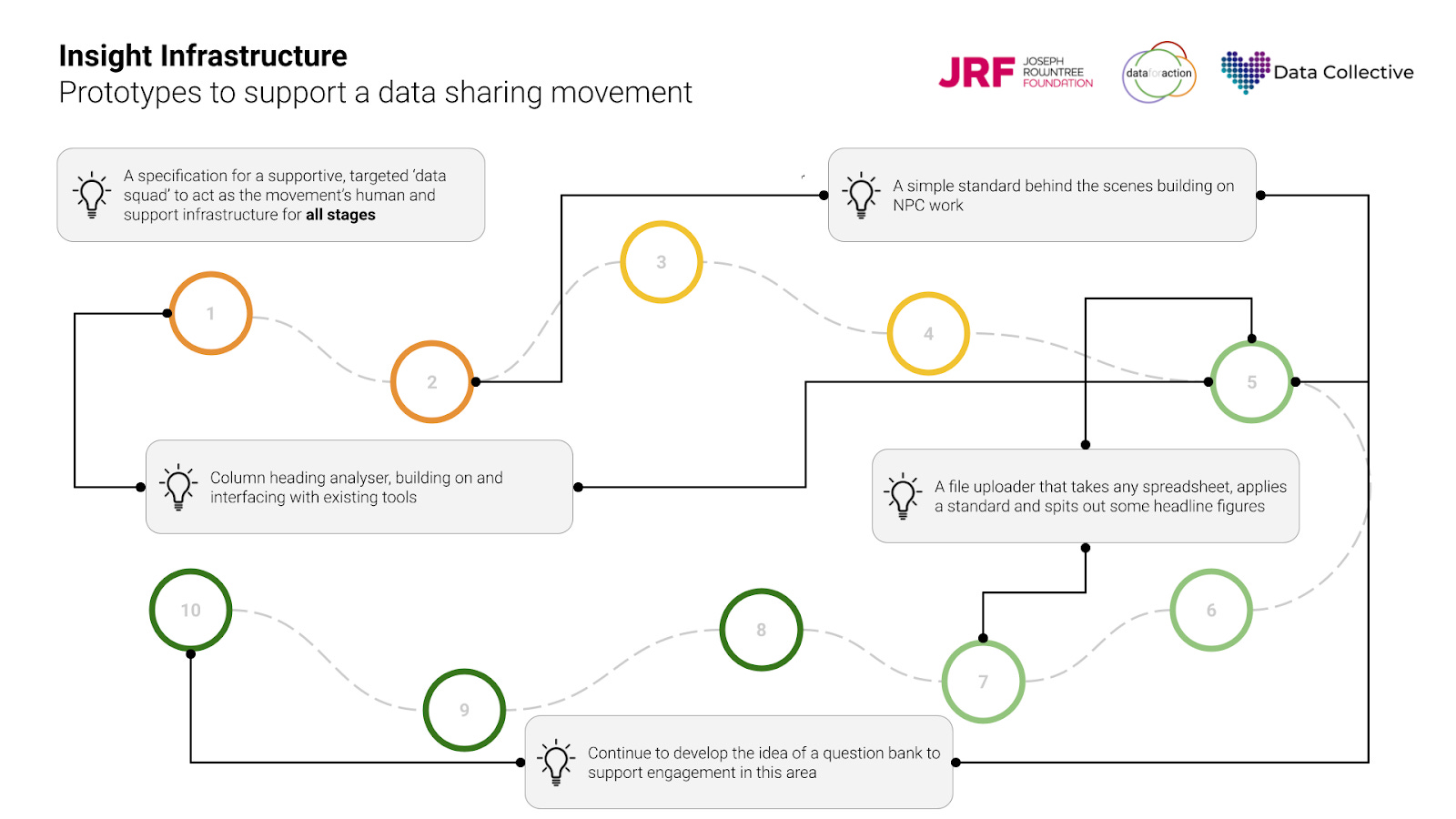As part of our work exploring charity and civil society Insight Infrastructure with JRF, we’ve now reached the point where it’s time to turn concepts and ideas into tangible prototypes based on what we’ve been learning. It’s been quite a journey so far. And the ideas and opportunities for what we could now focus on have been so far reaching and diverse. But now it’s time to limit our scope and concentrate on a few tangible, complementary prototypes that cater for the core themes that have emerged through the work to date.
Before we detail what’s next, it’s important to summarise how we’ve got here. In short, there have been four workshops, the first of which set the agenda for the remaining three, which covered ideas for prototyping under the themes of:
Although these workshops were structured around discrete topics, similar concepts and feelings were articulated consistently during them all in relation to the ideas for prototyping, including:
Whatever it is, make it quick and easy to do;
Give something back and make it clear that the value is reciprocal;
Build trust and reduce the perceived sense of risk;
Work with what’s there already rather than expecting lots of upfront effort to fit into a new way of doing things;
Enable tailored and appropriate support to be there when needed.
It is these things, coupled with the suggested ideas for prototyping, that have led us to this point.
From JRF’s perspective, and tying this back to the purpose of the broad programme of work, it’s important to imagine a world where charities and civil society organisations can contribute their data freely and easily to a pool of others’ to enrich the understanding of what’s happening in the UK in relation to poverty, while providing a clear, reciprocal incentive for doing so. Also imagine that there is a self-sustaining movement for change around this.
In other words, we must be clear that we are talking about a platform of some description, where people can upload data and see their analysis in situ, in both private and public views. This might not come as a surprise or feel like anything revolutionary, but it’s the incremental process, intermediate tools and associated support through which this happens that present the opportunities for what we’re going to do next and how this builds a movement.
To provide an alternative way to think about the purpose of the prototypes, we have translated what we’ve been hearing into a clear, step-wise user journey towards participation in the desired movement.1 This aims to include the ongoing incentives and value realisation required to support the journey. The purpose of any prototype is to create the most frictionless conditions for (people in) charities and civil society organisations to move along one or more of these stages at any given time.
To facilitate this journey, we will now be developing five prototypes for:
A ‘column heading analyser’, building on and interfacing with existing tools (e.g. WFTcsv), so that we can quickly understand who collects what and how that can inform a simple data standard;
A simple standard behind the scenes building on Data for Action’s work with NPC around the Local Needs Databank;
A file uploader that takes any spreadsheet, applies a simple standard and spits out some headline figures;
A specification for what a supportive, targeted ‘data squad’ might look like to act as the movement’s human and support infrastructure, including who’s best placed to coordinate it and why it’s different to other communities of practice;
The continued development of the Question Bank idea to support engagement in this area.
Get in touch and be involved in this.
The image below maps these prototypes against the user journey as a rationale for why we are focusing on these first:
We recognise that there are plenty more things we could prototype or re-purpose to facilitate the desired user journey, as the workshop outputs show. We have to start somewhere though. And we invite others - maybe you - to take the lead on exploring some of the other gaps with us.
Get in touch and be involved in this.
We recognise that others have been working on similar user journeys in the charity and civil society sector relating to data use too. We feel that our work focuses on the data sharing element specifically and can complement others’ findings.





